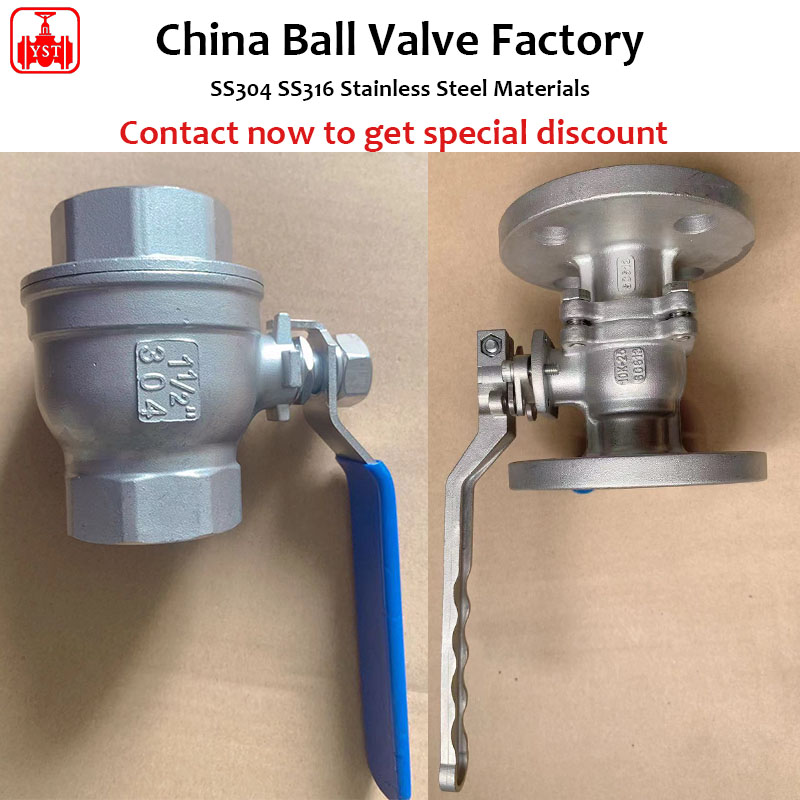Differences between Flanged Ball Valves and Threaded Ball Valves
Differences between Flanged Ball Valves and Threaded Ball Valves

Flanged Ball Valves:
Connection Method: Flanged ball valves are connected to the piping system using flanges. These flanges are bolted together, providing a secure and leak-proof connection.
Size and Application: They are typically used in larger diameter pipelines due to their robust connection method. Flanged ball valves are commonly found in industrial applications such as chemical processing, water treatment, and oil and gas.
Maintenance: The bolted flange connection allows for easier disassembly and maintenance. This makes flanged ball valves suitable for applications where regular maintenance is necessary.
Pressure and Temperature: These valves are suitable for higher pressure and temperature applications due to the strong and secure flange connection.
Installation: Installation can be more complex and time-consuming compared to threaded valves because it requires proper alignment of flanges and bolts.
Threaded Ball Valves:
Connection Method: Threaded ball valves use threaded ends to connect to the piping system. The threads can be either male or female, depending on the specific application.
Size and Application: They are typically used in smaller diameter pipelines. Threaded ball valves are common in residential and light commercial applications, such as plumbing and HVAC systems.
Maintenance: Threaded connections can be more challenging to disassemble, especially if they have been in place for a long time and the threads have become seized or corroded.
Pressure and Temperature: These valves are generally suitable for lower pressure and temperature applications compared to flanged ball valves.
Installation: Installation is relatively straightforward and quicker since it involves simply screwing the valve into the pipeline. However, care must be taken to ensure the threads are properly sealed to prevent leaks.
Summary:
Connection Method: Flanged ball valves use bolted flanges, while threaded ball valves use screw threads.
Size and Application: Flanged valves are for larger, industrial applications; threaded valves are for smaller, residential, or light commercial applications.
Maintenance: Flanged valves are easier to maintain; threaded valves can be more difficult to disassemble.
Pressure and Temperature: Flanged valves handle higher pressures and temperatures; threaded valves are suited for lower pressures and temperatures.
Installation: Flanged valves require precise alignment and bolting; threaded valves involve screwing into place but need careful sealing.
Understanding these differences helps in selecting the appropriate valve type based on the specific requirements of the piping system and the operational conditions.
CATEGORIES
LATEST NEWS
-
Stainless Steel Ball Valves Advant
Advantages of Stainless Steel Ball Valves: 1. C
-
316 Stainless Steel 3 PC Ball Valv
The 316 stainless steel 3-piece ball valve offer
-
[Valve knowledge] Advantages of 2
Structural features 1. There is no friction in
CONTACT US
Contact: Sales Team
Phone: +86(027)8476 6368
Tel: +86(027)8476 6368
Email: info@hbyst-valve.com
Add: Xinghong Road, Tonghaikou Town, Xiantao City, Hubei Province, China
